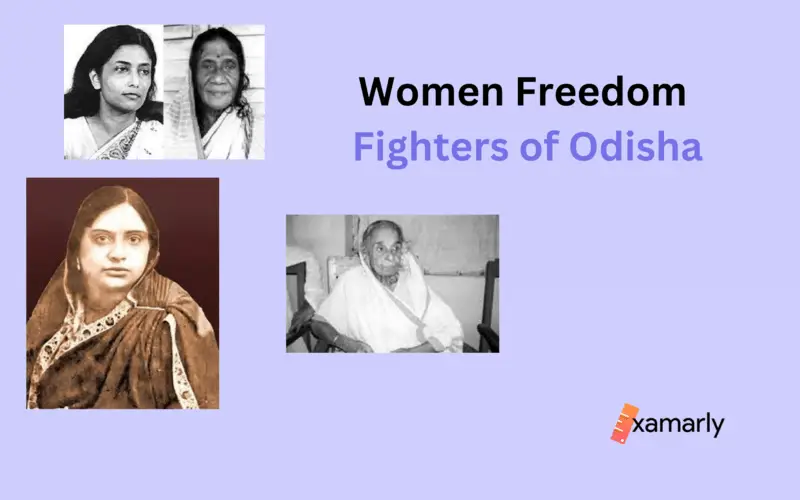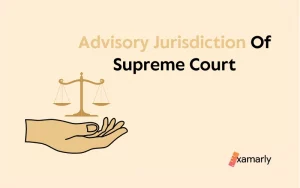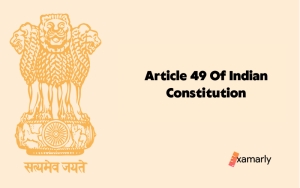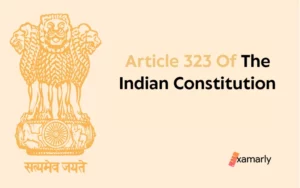The history of the Indian freedom struggle has long been dominated by men. It is the history and the dominant narratives of the fight for freedom that showcases this male dominance.
In reality, there were many brave women freedom fighters who diligently and selflessly fought against the foreign rule.
Each region in India has its own tales of the fight for freedom. Yet, everyone was moved by Mahatma Gandhi’s call to unite. Orissa also played a crucial role in the movement.
In fact, the women of Odisha played an integral role, specifically in the Satyagraha movement. While the role of women in the freedom struggle is often forgotten in historical narratives, their contributions cannot be overlooked.
They advocated social reforms, workers’ rights, indigenous industries, and inter-faith dialogue. Many women were self-educated and dedicated to the cause, including collecting donations for the Swaraj Fund.
Even their participation was not limited to a specific region but was broad and inclusive throughout the province.
Read this article further to acquire knowledge on female freedom fighters of Odisha, as this article will help you in your UPSC preparation.
Women Freedom Fighters Of Odisha
Here goes a list of women freedom fighters in Odisha. Although forgotten in history, they deserve to have a place in our public domain and memory
Annapurna Maharana
Annapurna Devi, also known as Chuni Apa, was a prominent social activist and pro-independence activist from Odisha. She worked closely with Gandhi.
Annapurna Devi was born to parents Gopabandhu Choudhury and Rama Devi, who were active participants in the Indian independence struggle.
Being exposed to ideas of freedom from childhood, Annapurna Devi stepped into the movement when she was 14 years of age and became an ardent supporter of Gandhi. She joined his “Harijan Pada Yatra” march in 1934.
She was also arrested by the British, notably during the Quit India Movement, and subsequently released.
A pioneer among women freedom fighters in Odisha, Rama Devi accompanied Gandhiji to a meeting of 40 women at the Binod Vihari temple in 1921, where she pledged her services to fight for the freedom of her country.
In 1923, she participated in a Satyagraha campaign in Inchudi and encouraged other women to join a camp in Balasore.
After independence, she worked for social reform and had strong sentiments on issues pertaining to women and children.
She went on to establish a school in the Rayagada district of Odisha for the children of the local tribal people. Maharana also joined the Vinoba Bhave-founded Bhoodan movement.
She continued to advocate for the integration of the Chambal Valley’s active Dacoits. During the emergency, she voiced her opposition by assisting Ramadevi Choudhury with their newspaper, which was printed by the Gram Sevak Press
On 19 August 2012, Maharana received an Honoris Causa (honorary degree) from the Central University of Odisha. She breathed her last at the age of 96 at her residence in Cuttack, Odisha on 31 December as a result of prolonged age-related ailments.
Sarala Devi
In addition to being an acclaimed writer and poet, Sarala Devi was also a social activist, feminist, and freedom fighter.
She fought against social injustice and promoted women’s rights. In 1921, she became the first female from Odisha to join the Non-Cooperation movement as well as the Indian National Congress as a delegate.
Further, she was elected as the first female member of the Odisha Legislative Assembly in 1936.
She was born into an affluent Zamindar family. Her parents were Dewan Basudev Kanungo and Padmavati Devi. She was adopted and brought up by her uncle Balamukunda Kanungo, who was also a Deputy Collector.
Sarala Devi received education from a home tutor who taught her Bengali, Odia, English, and Sanskrit. Stories of Suka Devi, the ruler of Banki, encouraged young Sarala to join the independence.
She gave a sizable portion of her jewellery collection and real estate holdings to the cause of India’s freedom. In 1917, she wed renowned attorney Bhagirathi Mohapatra. In 1918, she joined the Indian National Congress.
In the early stages of the struggle, the women of Odisha embraced literature as a powerful form of anti-colonial nationalism.
Sarala Devi was the first woman to be elected to the Odisha legislature. A social activist and feminist, she came from a modest educational background but eventually rose to become a prolific writer in her native state.
Sarala Devi was also an active member of the Indian freedom movement, and her contribution to the struggle is worth celebrating.
As the only woman in Odisha to join the Indian independence movement, Sarala Devi embodied the ideals of Mahatma Gandhi and fought against British colonialism.
Following Mahatma Gandhi’s initial visit to Orissa in 1921, Sarala herself became a member of Congress.
She was the first female Speaker and female Member of the Odisha Legislative Assembly. From 1943 until 1946, she served as the Utkal Sahitya Samaj’s secretary in Cuttack. She has authored over 300 essays and 30 books.
Kuntala Kumari Sabat
One of the most prominent freedom fighters in Odisha, Kuntala Kumari Sabat was a poet and writer.
Along with being a freedom fighter and writer, Kuntala Kumari Sabat was a doctor and a social worker. She used her poetic gifts to ignite patriotism and inspired other women to join the independence movement.
The Kuntala Kumari Sabat freedom fighter of Odisha was born in Burma but later returned to her native state. Her parents had lived in Burma for a long time.
She completed her studies at Ravenshaw girls school in Cuttack and earned a medical degree, becoming the first female doctor in her hometown.
She also served as a volunteer for the Swaraj Fund and was an active member of the All-India Women’s Conference.
Her social work was more or less around the lines of caste eradication and women’s welfare. She advocated against Purdah, child marriage, and gender inequality in her writings. She fought for women’s liberation and widow remarriage.
After independence, Sabat continued to write poetry and novels in Oriya and Bengali. She also gave lectures at Banaras Hindu University and Allahabad University.
She later became president of the students’ federation in Aligarh and was also the chairperson of the Harbilash Sarda society. Her literary contributions led to many awards.
| You Might Also Like |
| Female Freedom Fighters Of Bengal |
| Women Freedom Fighters Of Karnataka |
| Female Freedom Fighters Of Telangana |
| Female Freedom Fighters of Maharashtra |
| Female Freedom Fighters of Goa |
Malati Choudhury
Malati Choudhury was one of the most influential freedom fighters in Odisha. Along with being a Gandhian, she was an advocate of Indian civil rights.
In 1934, she joined Mahatma Gandhi’s Padayatra in Odisha. She also participated in the Salt Satyagraha against the Salt Law.
She also set up Bajiraut Chhatravas and Utkal Navajeevan Mandal in Angul and worked for the betterment of his community by spreading education and promoting Gandhiji’s ideas.
Malati Devi Choudhury was born in East Bengal and was raised in an upper-middle-class family.
She was the daughter of a Barrister, Kumud Nath Sen. Her father passed away when she was just two years old, and she was raised by her mother Snehalata Sen.
In an effort to fight the zamindars and moneylenders who took advantage of the underprivileged, she founded the “Krusaka Andolana” (Farmers Movement).
She also understood that women were often the targets of superstitious ideas and that it was up to them alone to combat these beliefs in order to further their own empowerment.
In addition to her activism, Malati was involved in the founding of Utkal Navjeevan Mandal in Orissa.
This organization worked to protect poor peasants and tribals from landowners and moneylenders. She also acted as President of the Orissa Civil Liberties Committee and condemned the killing of Naxalites.
After India gained its independence, Malati Choudhury did her utmost to stress the importance of education in rural rebuilding as both a member of the Indian Constituent Assembly and the President of the Utkal Pradesh Congress Committee.
Her success did not stop at the founding of the Bajiraut Chhatravas, Utkal Navajeevan Mandal, and the Postbasic School in Champatimunda.
She had joined Acharya Vinoba Bhave’s Bhoodan Movement. She breathed her last at the age of 9, leaving behind many treasured efforts in improving the lives of underprivileged sections.
Parbati Giri
One of the most prominent women freedom fighters of Odisha, Parbati Giri was nicknamed “Mother Teresa of Western Odisha”.
She was imprisoned by the British for her anti-British activities in the early twentieth century. After gaining her freedom, she continued to work for the people of Western Odisha.
She founded an orphanage in Paikmal village and spent her entire life helping the orphans and poor.
On 19 January 1926, Giri was born in the Samlaipadar village. As a young girl, she frequented the Bari Ashram.
While living in Bari Ashram, Parbati studied Ahimsa and Self Reliance. She got acquainted with the nationalist struggle through her uncle Ramchandra Giri.
Incidentally, many meetings and gatherings of various nationalists happened in the Samlaipadar village. By witnessing these meetings, Parbati got initiated into the struggle for independence.
She began travelling to different villages where she organized meetings with people and taught them weaving and spinning.
After joining the Rama Devi Ashram in 1954, she devoted her remaining years to social service.
In addition to her work at the Paikmal village orphanage, she lent her support to an American project in the Sambalpur district.
She also helped establish Kasturba Gandhi Matruniketan in Nrusinghanath and Dr Santra Bal Niketan in Birasingh Gar. She also worked for leprosy education and improved jails.
Rama Devi
Rama Devi, the eminent freedom fighter of Odisha, was affectionately called “Maa” by the people of Odisha.
Apart from being an Indian freedom fighter, Rama Devi was also a social reformer. It is after her that the Ramadevi Women’s University in Bhubhaneshwar was named.
She was born in Satyabhamapur, near Cuttack. She was the niece of Utkal Gaurab Madhusudan Das and the daughter of Gopal Ballav Das and Basant Kumari Devi. She wed Gopabandhu Choudhury, a Deputy Collector at the time.
Rama Devi was a pioneer among women freedom fighters in Odisha. In 1921, she convened a meeting with forty women at the Binod Vihari temple in Cuttack and presented a bundle of hand-spun threads to Gandhiji.
She vowed to serve Gandhiji as a freedom fighter. She later joined the Satyagraha movement at Inchudi and encouraged other women to participate in the camp at Balasore.
In 1952, she and Gopabandhu Choudhury led a foot march covering 2000 miles in one year. They spread their ideals throughout the state.
She actively participated in the Bhoodan and Gramdan movements of Acharya Vinoba Bhave. She also raised slogans against the Emergency, a rule imposed during the period of Indira Gandhi.
She even brought her own newspaper. That is, in 1975, Rama Devi joined the struggle against the Emergency and launched a newspaper with her signature that spread the word about press freedom.
It was banned by the government and Rama Devi and many other freedom fighters were arrested and detained. However, they never surrendered and continued their fight against injustice.
Rama Devi also participated in national service activities. She helped the people of Odisha by establishing the Utkal Relief Committee and was a major force behind the Hindu-Muslim unity movement. The ideals of the Sarvodaya Movements in India were also ingrained in her mind.
Conclusion
Despite the fact that women in Odisha were often not recognized as freedom fighters, they were courageous and dedicated.
They sacrificed worldly ambitions and followed the path of Gandhiji and the Swaraj Fund unselfishly. Some of them wrote letters to the Mahatma and collected Swaraj Fund donations.
Their participation was not regional, but was widespread across the province, involving rural, southeastern, and remote areas.
Although Indian women did not get ample recognition in historical narratives, it is upon us to change the story.
Women activists at the national level and their selfless dedication to matters of the nation as well as the society, should not go unnoticed or worse uncelebrated.
Let us remember and value each such dedicated freedom fighter.
FAQs Related To Women Freedom Fighters Of Odisha
Who were the women freedom fighters of Odia?
The women of Odisha who had played a very important role in the freedom struggle of India were Rama Devi, Sarala Devi, and Malati Devi. commonest of the common woman Pari Bewa also faced the police bullet at Eram in the struggle for freedom against the British.
Who Is The First Woman Freedom Fighter Of Odisha?
Rama Devi is the first woman freedom fighter of Odisha.
Who Was The Famous Freedom Fighter From Odisha Called “Toofani” By Gandhiji?
Malati Devi Choudhury was a famous freedom fighter who was called “Toofani” by Gandhi Ji.
What Is The Role Of Women Freedom Fighters Of Odisha In Indian Independence?
Fighting for freedom did not come as a challenge to many acclaimed freedom fighters of Odisha. Their brave role is not limited regionally.
In fact, many women took up to the streets to push the movement forward and gain more supporters for it. Interestingly, they emphasized the social responsibility of educating oneself and distancing oneself from all social injustices.
Most of them played a crucial role in the literature of the land. These valiant woman freedom fighters paved the way for India becoming the free and democratic country that it is today.
Who is the First Lady Chief Minister of Odisha?
The first lady Chief Minister of Odisha Srimati Nandini Satapathy was born in Cuttack and did her degree from Ravenshaw College.






